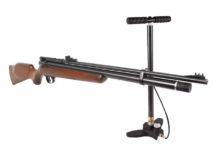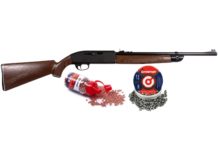Three days without water is the general rule of thumb for how long we can live without it. Given its importance, we should be well versed in the many methods for finding water in the wild.
The most obvious source is a body of water such as a river or lake. But what about another resource that is all around us? I am talking about trees.
Trees can contain a huge amount of water in the form of sap. This sap contains vitamins, minerals, sugar but is primarily made up of water. Since the tree is like one big filter, this sap is perfectly fine to drink. But the question then becomes how to get at it. For that, you will need a tree spile. To be fair, you do not have to carry a modern spile to tap a tree but it sure makes it easier.
What is a Tree Spile?
Chances are you may have seen one of these without even knowing it. Either in person or through TV I bet you have seen maple syrup collected from a tree.
To do this a hole is drilled in the tree, a spile is tapped in and a bucket is hung from the spile. A spile is simply a hollow metal tube that directs the sap into a bucket, rather than letting it run down the bark.
Choosing A Spile
There are a few different options when it comes to choosing this tool. There are different styles that can make the tapping process a bit easier. Some have an end that comes more to a point while others are more rounded. But I am more concerned about the materials they are made from.
Generally, they are made from aluminum, stainless steel, and plastic. Aluminum and plastics options are certainly going to be lighter in weight and cheaper to buy. I believe I even have seen some of the plastic spiles for under a dollar.
This is my personal opinion but I lean towards the stainless steel spiles. They are more expensive but they are less prone to breaking or bending like aluminum or plastic options. I am also not concerned with weight as even a stainless steel spile is quite light and I will only be carrying one. Again that is just my preference and I’m sure the other people have had just as much success with the other types.
Before Using a Spile
First, not all trees can or should be tapped. I am only familiar with tapping maples and birches but I do know there are other trees that can be tapped. If you are interested in trying this process I would recommend that you learn what trees can be tapped and if they are in your area.
Secondly, this method is somewhat seasonal as it works best in late winter to spring. This is when the tree is experiencing very cold nights, below freezing, and then above freezing daytime temperatures.
This temperature difference causes a higher sap flow or pressure within the tree. When a hole is created in the tree, the sap has a place to escape. When this is timed correctly, a gallon or more of sap can be collected in just a few hours.
How To Use A Tree Spile
Once a tree is selected, using a spile is quite easy. It is my recommendation that all of the tools and collection container be ready to go beforehand so as not to waste any sap. Here is a list of the tools you will need.
- Drill bit, knife, or some sort of spike for creating the hole in the side of the tree.
- Spile
- Collection container: This could be a cup, water bottle or anything that will catch and hold the sap
- Cordage: While cordage is not required it may be helpful to hold the collection container in place.
- Impact tool: This can be the butt of a knife, a hammer, or a sturdy branch but you will need something to tap the spile into the tree.
When all of these tools are collected and laid out in front of you, go ahead and follow the steps below.
Step One
Remove a small section of the bark being careful to remove just enough for the spile. Considering that the tree is giving you something it is always good to keep conservation in mind. Only take what you need in order to keep the tree as healthy as possible
Step Two
A hole needs to be drilled for the spile to be tapped into. Ideally, this would be done with a drill which most people do not carry in a pack, some do, but most do not. The tip of a knife will work or a spiked tomahawk.
Step Three
Clean out some of the loose debris from the hole and insert the spile angling the front end slightly downward. The spile does not need to be at an extreme angle, and in fact, it shouldn’t be. It only needs to provide enough of a slope that the sap will run down it. Now, use the butt of a knife handle or a piece of wood and tap the spile firmly into the hole.
The spile does not need to be hammered in but it should rest firmly enough in the hole that it can support the weight of a collection container.
Step Four
Hang a collection container from the spile or place it on the ground beneath it. If it is on the ground just make sure it will not tip over.
Step Five
After you are done tapping a tree it is best to pack the hole with clay or dirt. This will help prevent that area from becoming infected.
Video
Check out this great video demonstrating how to use a tree spile:
Final Words
Unless the sap is being stored in very cold conditions it should be consumed right away, within the first day or two at most, otherwise it can go “bad.”
But with one little tool and five easy steps, you now know how to collect water from a tree. Thanks for reading.







































![Air gun 101: The differences between .177 & .22 – Which jobs they do best ? [Infographic]](https://airgunmaniac.com/wp-content/uploads/2020/09/g44-150x150.jpg)



